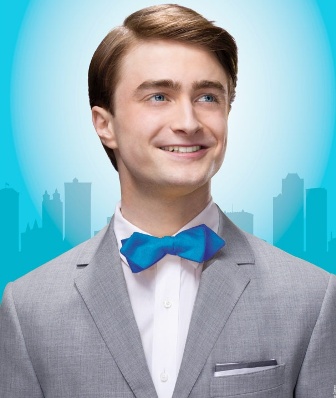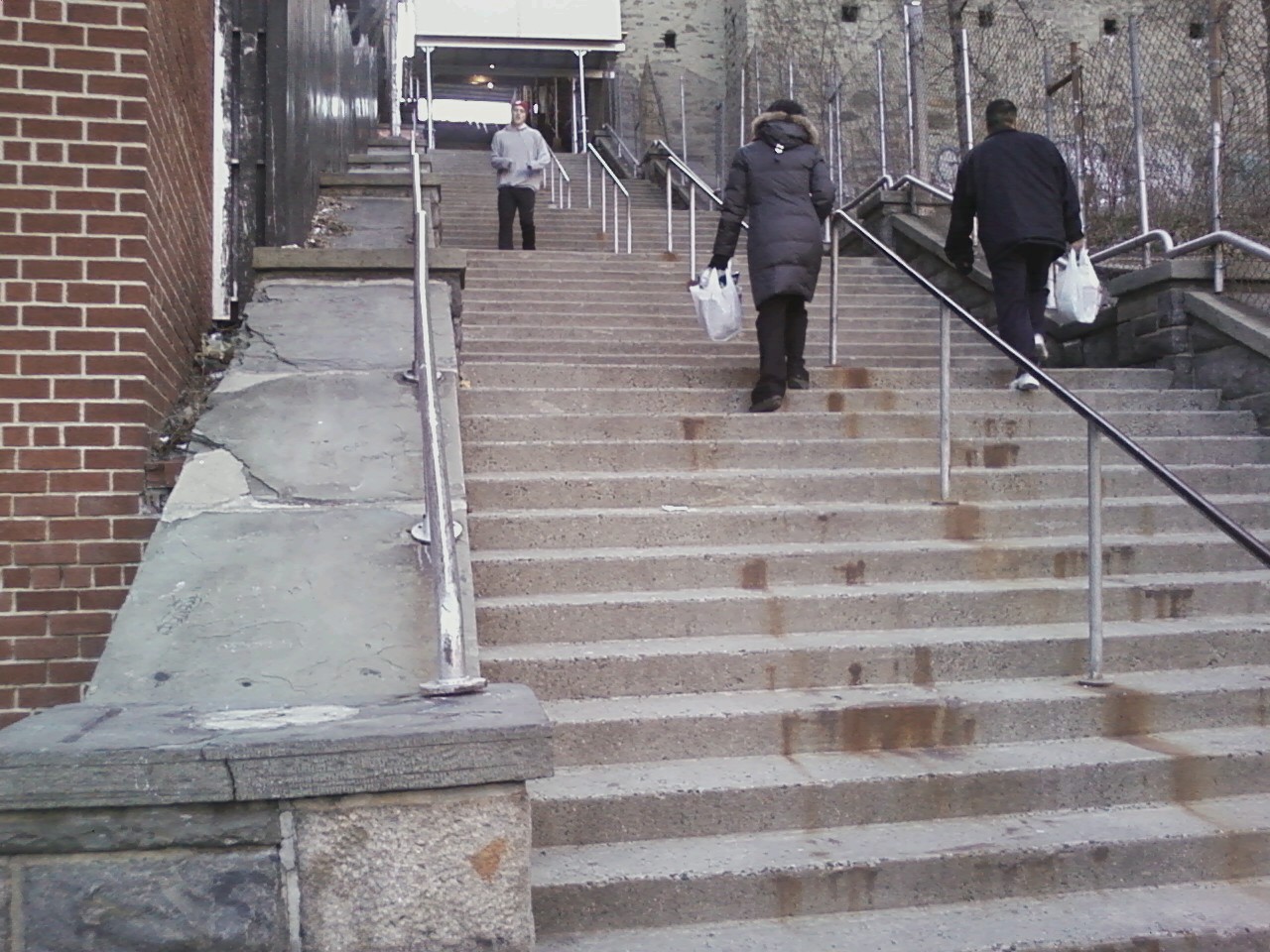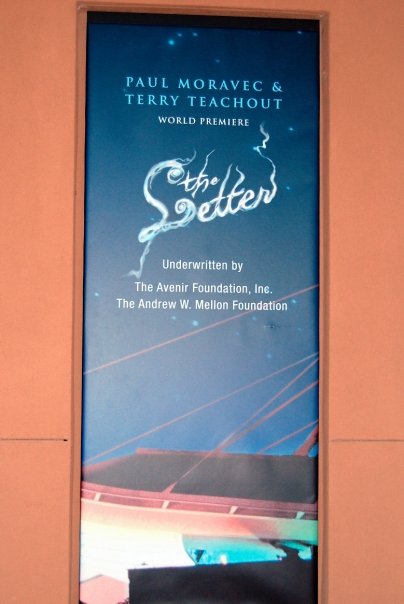Finally, a rave: I review How to Succeed in Business Without Really Trying in Tuesday’s Wall Street Journal, rapturously. This piece went up on the paper’s Web site a couple of minutes ago, so I’ve decided to go ahead and publish it here as well. Here’s a excerpt.
* * *
The professionals are back. Well into one of the dimmest Broadway seasons in recent memory, Rob Ashford has lit the lights with a smart and satisfying production of “How to Succeed in Business Without Really Trying,” the Frank Loesser-Abe Burrows musical that taught a generation of viperine office politicians how to stick a shiv into their bosses without leaving any fingerprints on the handle. Needless to say, it’s Daniel Radcliffe, better known as Harry Potter, who’s filling the seats, but it’s Mr. Ashford who deserves most of the credit for the artistic success of this hard-charging, high-flying revival of a show whose gleaming craftsmanship is as self-evident today as when it opened on Broadway a half-century ago.
Surely little need be said about the oft-celebrated virtues of “How to Succeed.” For openers, it features a perfect score by Loesser in which every song pushes the action along briskly. Burrows, who also collaborated with Loesser on “Guys and Dolls,” another entry on the short list of all-time great musicals, was primarily responsible for the book, which is put together with immaculate skill. And that brings us back to Mr. Ashford, who with “How to Succeed” establishes himself as one of the best comic choreographers on Broadway today. Not only are his dances full of perfectly realized visual punchlines, but they have an exhilarating momentum that serves the show without overwhelming the plot. Each number builds on its predecessor until you want to stand up and yell with delight–which, at show’s end, is what you’ll do….
 Of course you’ll be wanting to know all about Mr. Radcliffe, and the answer is that he’s a pretty good singer and an unexpectedly good dancer. His small voice is plaintive, well-tuned and rather sweet, which puts a fresh spin on the familiar character of J. Pierrepont Finch, who ascends from the mailroom to the boardroom with vertiginous speed. Mr. Radcliffe’s Finch is a twinkly, huggable gent whose ruthless unscrupulosity is positively endearing.
Of course you’ll be wanting to know all about Mr. Radcliffe, and the answer is that he’s a pretty good singer and an unexpectedly good dancer. His small voice is plaintive, well-tuned and rather sweet, which puts a fresh spin on the familiar character of J. Pierrepont Finch, who ascends from the mailroom to the boardroom with vertiginous speed. Mr. Radcliffe’s Finch is a twinkly, huggable gent whose ruthless unscrupulosity is positively endearing.
The only problem with this approach is that Mr. Radcliffe doesn’t have the vocal firepower needed to put his big number, “I Believe in You,” all the way across the footlights, which causes the second act to sag briefly in the middle. But not to worry, for Mr. Ashford’s staging of “Brotherhood of Man” is so propulsive that the energy level soars again, and Mr. Radcliffe is on top (literally) of every step. No, he’s not Robert Morse, who created the role on Broadway, then filmed it in 1967. But who is–and so what?…
* * *
Read the whole thing here.
Robert Morse sings “I Believe in You” in the 1967 film version of How to Succeed in Business Without Really Trying:
Archives for March 28, 2011
TT: Thanks a million
I nearly deleted this piece of blogmail because the subject header looked like spam. Something made me hesitate and open it up, and this is what it said:
I am the recipient of many undeserved blessings. You are one of them. I only met you once in person at the book signing [for Pops] in New Orleans. Yet I meet you every day on your blog. Thanks.
To you as well, sir–and to everyone else who reads “About Last Night.” Your collective presence is a daily pleasure.
TT: New leaf
 I walk up these one hundred and twenty-eight steps nearly every day when I’m in Manhattan. They are the climax of my daily walk, which takes me past Bennett Park, the highest natural point on the island of Manhattan, down to the bustling Dominican enclave that surrounds 181st Street, over to a side street called Overlook Terrace, and up the long, long staircase that leads to Hudson Heights, my new neighborhood. I usually spend a half-hour on this hilly circuit, a pretty fair chunk of walking for a middle-aged man who, left to his own devices, would probably get next to no exercise at all.
I walk up these one hundred and twenty-eight steps nearly every day when I’m in Manhattan. They are the climax of my daily walk, which takes me past Bennett Park, the highest natural point on the island of Manhattan, down to the bustling Dominican enclave that surrounds 181st Street, over to a side street called Overlook Terrace, and up the long, long staircase that leads to Hudson Heights, my new neighborhood. I usually spend a half-hour on this hilly circuit, a pretty fair chunk of walking for a middle-aged man who, left to his own devices, would probably get next to no exercise at all.
Why do I do it? Because Mrs. T and my doctor want me to, and because I share their feeling that the world is a better place with me in it. Would that physical exercise came more naturally to me, but it never has, partly because I’m clumsy (a typical by-product of lifelong left-handedness) and partly because I was always the sort of kid who preferred reading or practicing piano to playing in the street. As a result, I weigh too much and have hypertension, for which I take an assortment of pills twice a day and strive to eat more austerely. Nearly dying five years ago fired my resolve to take care of myself, and getting married sealed the deal…or so I thought. But the summer and fall of 2009 were so hectic, what with the premiere of The Letter and the publication of Pops, that I fell off the wagon of self-maintenance, and by last fall I was out of shape and feeling the consequences.
The good news is that moving to Hudson Heights, perhaps not surprisingly, has inspired me to straighten up and fly right again. No, I don’t like it, and somehow I doubt I ever will. But I do like exploring my new neighborhood very much, and I also like the thought of living longer. I have books and operas and plays to write, and I also have a wife who, for reasons of her own, enjoys my company and would prefer not to be deprived of it unexpectedly.
So now I’m eating smarter, getting smaller, and trudging up that 128-step staircase once a day, and maybe one day I’ll learn to like it. Probably not, though.
UPDATE: I got a clean bill of health from the doctor this morning. Then I trudged back up the hill again….
TT: The Letter is back
 Paul Moravec and I aren’t so busy prepping for the world premiere of Danse Russe that we’ve forgotten about our first opera. The New School is putting on an arts festival called Noir, and The Letter is very much a part of it.
Paul Moravec and I aren’t so busy prepping for the world premiere of Danse Russe that we’ve forgotten about our first opera. The New School is putting on an arts festival called Noir, and The Letter is very much a part of it.
Quoth the press release:
The theme of our first arts festival is Noir, a cinematic style of shadowy expressiveness that had its heyday in the 1930s and 1940s. Coined by a French critic in 1946, the term film noir refers to movies depicting a morally ambiguous world of cynical private eyes, lonely gangsters, and femme fatales. Since then, the influence of noir has been felt in areas ranging from fashion design to fine art, graphic art to fiction, suggesting the alienation and disorientation of modernism through stark silhouettes, sexual frankness, stylized emotion, and the absence of sentimentality. Join The New School community in an exploration of noir in a festival of iconic films, hard-boiled storytelling, graphic art, and illustration inspired by this uniquely 20th century style.
That’s right up our alley, The Letter being what Paul has called an “opera noir,” and so we’re taking part in the festival, which will also feature appearances and presentations by such interesting folk as Mary Gaitskill, Molly Haskell, Todd Haynes, Ben Katchor, Greil Marcus, Frances McDormand, and Luc Sante.
For our part, Paul and I will be presenting and discussing excerpts–both live and on video–from The Letter at 7:30 p.m. on Thursday, April 7. Our joint appearance will take place in the New School’s Arnhold Hall, which is at 55 W. 13th St. in Manhattan.
Admission to this and other festival events is free, but seating is limited and you must make an advance reservation to get in. To do so, or for more information about the festival, go here.
TT: At it again
In case you haven’t noticed, there’s new stuff in the right-hand column. Take a gander when you get a chance.
TT: Almanac
“For one thing, creativity is merely a plus name for regular activity; the ditchdigger, dentist, and artist go about their tasks in much the same way, and any activity becomes creative when the doer cares about doing it right, or better.”
John Updike, Picked-Up Pieces
